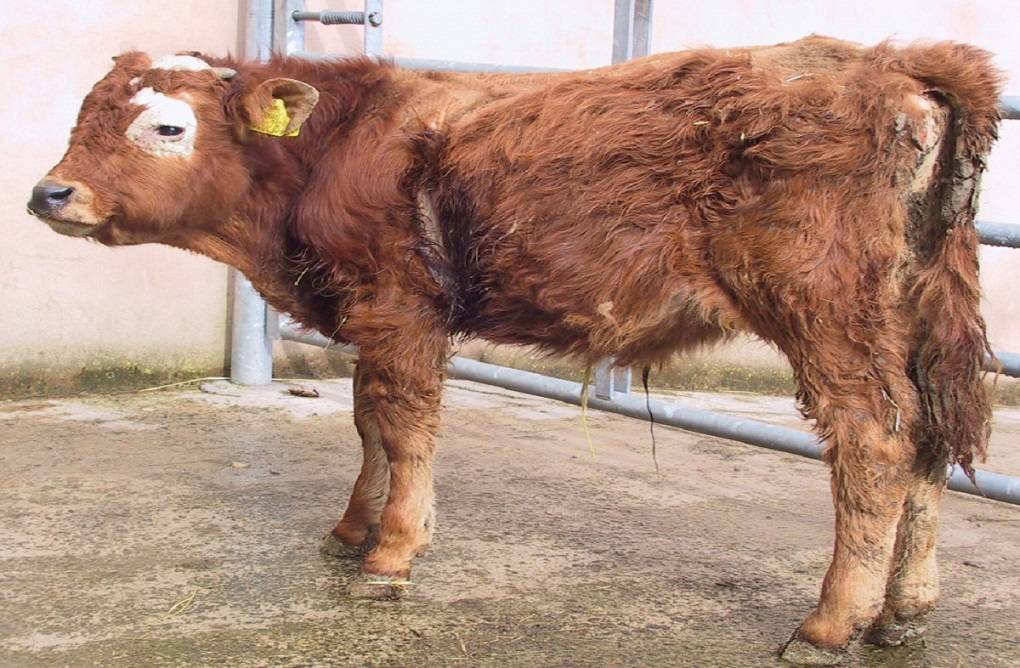
Bovine viral diarrhoea is a disease of cattle caused by the Bovine Viral Diarrhoea Virus. The virus is widespread and most herds are at risk of infection. BVD is a respiratory and reproductive virus that wreaks havoc on cattle’s immune systems and their ability to bore calves. This disease can be passed on to calves at birth and has variable symptoms.
The costs of reproductive failure and production losses can be very high and many countries have introduced eradication schemes for the virus. Major financial losses result when the infection is introduced into a group of susceptible breeding cattle resulting in poor reproductive performance and the birth of calves with persistent virus infection. Now, let us take a look at how BVD is transmitted, its causes, symptoms, and ways to prevent it.
Causes of Bovine Viral Diarrhoea
Bovine viral diarrhoea is a viral disease of cattle that is caused by the bovine viral diarrhoea virus. It is transmitted in a number of ways such as-
-
Bovine viral diarrhoea virus is transmitted from animals that are exposed to other BVDV-infected animals as they pass through an auction market. Pregnant animals moving through auction markets are at a higher risk of catching this infection because they are heavily stressed, which lowers their immunity.
-
This virus is transmitted by introducing new animals directly into an existing herd without isolating and vaccinating them.
-
Failure to properly vaccinate the herd puts the herd at a higher risk of catching the disease.
Signs and Symptoms of Bovine Viral Diarrhoea
The signs and symptoms of Bovine Viral Diarrhoea vary based on maturity.
Signs of BVD in calves
-
Tremors
-
Wide stance
-
Failure to nurse
-
Stumbling
-
Lack of voluntary muscle movements
Signs of BVD in mature adults
-
Loss of appetite
-
Oral lesions
-
Diarrhoea
-
Nasal Discharge
-
Discharge from eyes
-
Fever
A pregnant bovine infected with BVD will also experience-
-
Weak and premature calves
-
Live persistently-infected calves
-
Mummification of the foetus
-
Foetal death or abortion
-
Embryonic death
-
Birth defects of the nervous system and eyes
Prevention of Bovine Viral Diarrhoea
-
Keep a closed herd.
-
While buying cattle, only purchase from BVDV-accredited herds. If you are considering buying cattle from non-BVDV accredited herds, then you must get the cattle’s blood tested and isolate them before introducing them to the herd. Also, vaccinate them two weeks prior to moving. Move the animals in your own truck, directly from farm to farm.
-
Constantly monitor and screen your cattle for signs of BVD.
-
Vaccinate cattle for BVD. There are two types of BVD vaccines available- Modified live virus and killed virus vaccine. While only one dose of modified live virus vaccine is required, however, it is difficult to inoculate. On the other hand, the killed virus vaccine is more expensive and requires more than one dose, however, it is less susceptible to deactivation by temperature extremes and adverse environmental conditions.
Takeaway
Bovine viral diarrhoea is considered one of the costliest diseases of cattle and one which leads to serious economic losses. BVD is associated with abortions, infertility, and embryonic deaths along with reduced reproductive performance and increased premature culling. Animals that develop acute symptoms of this disease may die very young or live a life with costly recovery periods, decreased milk production, and growth. BVD also causes the cattle to be depressed and makes them susceptible to other diseases. Therefore, it is important for handlers to practice utmost caution and follow a strict prevention strategy.















